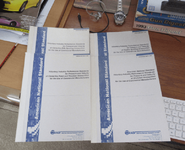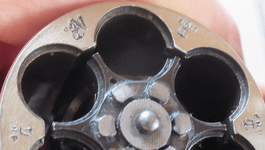Bronze Supporter
- Messages
- 19,722
- Reactions
- 55,071
I'm lazy -- I just write a letter on the cartridges and keep track in a separate spreadsheet.
Caveman don't have computer in shop, write it in a log book, by hand...
Follow along with the video below to see how to install our site as a web app on your home screen.
Note: This feature may not be available in some browsers.
I'm lazy -- I just write a letter on the cartridges and keep track in a separate spreadsheet.
Caveman don't have computer in shop, write it in a log book, by hand...
I like to be able to read what I wrote, so I do. ;-)
Ummm... Wow...Ok, a very recent one setting up the 300BLK powder drop die in the turret after the Pro1000 went Tittts up.
View attachment 710833
Ummm... Wow...

My dad bought some reloads from a local respected gunsmith. I took the Model 88 Winchester .243 out to shoot ground squirrels at long range. The first shot kicked like a mule and when I opened the action the primer fell out of the case. Being young and foolish, I tried another shot. I had to pry the lever action open and the primer fell out again.
We took the rest of the ammo back to the gunsmith shop. Upon inspection it was determined that instead of the right amount of 4350, SOMEONE had loaded the correct amount of Ball C powder. We never fired anyone else's reloads again.



A similar occurrence for me also, now I write the charge weight on the cartridge itself with a Sharpie. Problem solved and I can inspect every one knowing it's correct designation.
View attachment 710686
View attachment 710687 View attachment 710688
Does the marker come of the brass with walnut tumbling? 'Cause I don't want no black writing left on my brass!
Respectfully and with genuine curiosity, do you think that we would be well served to adopt CIP here in the U.S., even though it means running small manufacturers out of business and increasing costs?
The vast majority of kabooms I've heard of are people shooting their personal reloads.
Thank you for the reply. To be honest it doesn't concern me, though I rarely shoot factory ammo other than rimfire. I have shot a huge quantity of various military surplus over the years, from numerous countries often made in wartime conditions, so I've seen my share of questionable and downright bad ammo. I've seen licensed and insured commercial reloads at gun shows that I wouldn't care to shoot, too, but in general I just don't think it's a substantial problem.Does the lack of supervised QC concern you?